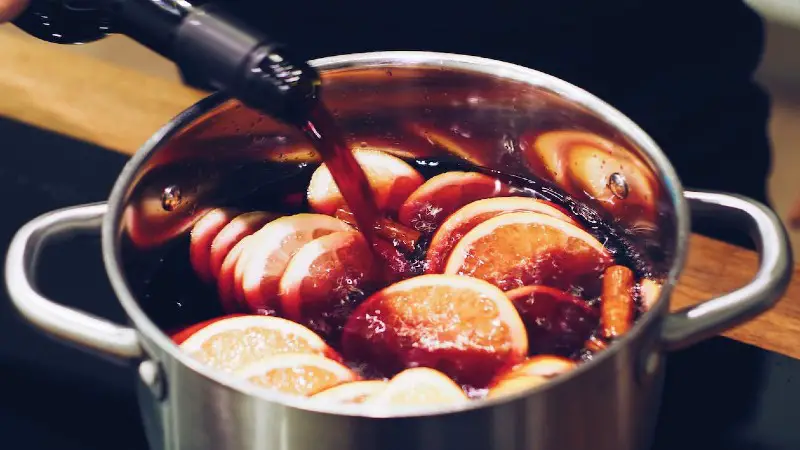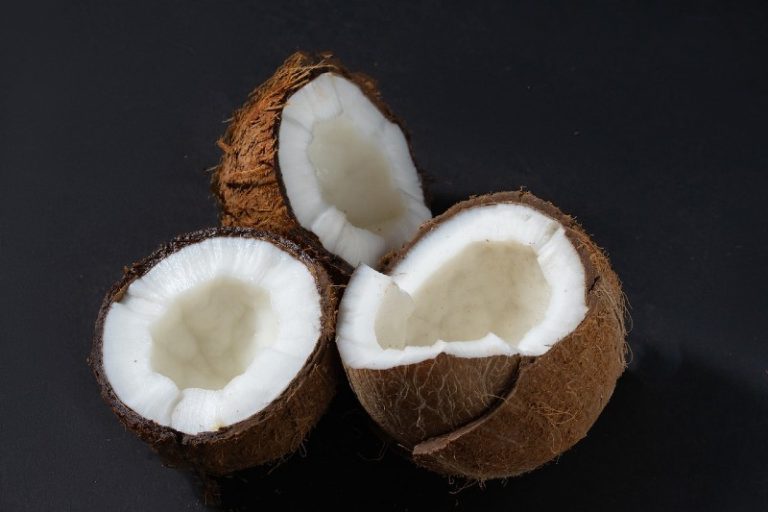Red Cooking Wine vs Red Wine Vinegar – Which One’s Right for You?
In the world of culinary creations, the nuances of ingredients play a pivotal role. Red cooking wine and red wine vinegar are two such ingredients that, while seemingly similar in name and appearance, have distinct differences. While they both present as red-hued liquids that may seem interchangeable at first glance, their functions in the kitchen are decidedly distinct.
Understanding the nuances between red cooking wine and red wine vinegar is crucial for any budding chef or home cook. The right choice can elevate a dish to perfection, while an uninformed substitution might lead to a culinary misstep.
Red cooking wine is, in essence, wine tailored for culinary use. It’s fermented from red grapes, and while it does resemble the wine we drink, it often contains additives and sometimes, salt, making it less ideal for casual sipping.
On the other hand, red wine vinegar is what it sounds like: vinegar produced from red wine. This transformative process gives it a sharp, acidic profile, a stark contrast to the milder, fruitier essence of its wine counterpart.
Red Cooking Wine vs Red Wine Vinegar Quick Comparison
| Aspect | Red Cooking Wine | Red Wine Vinegar |
|---|---|---|
| Origin & History | Derived from fermented grapes, historically used in culinary dishes for added depth and flavor. | Evolves from wine; historical use in preservation and flavoring. |
| Production Method | Fermentation of red grapes, may include additives, preservatives, and salt. | Wine undergoes acetification to turn into vinegar. Dominant role of acetic acid bacteria. |
| Flavor Profile | Sweeter, subtle hints of grape variety, can be salty. | Tart and acidic, with undertones from the wine it was made from. |
| Culinary Uses | Marinating meats, deglazing pans, enhancing sauces and stews. | Salad dressings, pickling, marinades, brightening dishes with acidity. |
| Nutritional Info | Higher in calories (due to alcohol), contains carbohydrates, salt, and some vitamins. | Lower in calories, high in acetic acid with potential health benefits. |
| Substitution | Can sometimes substitute for vinegar with adjustments to acidity and sweetness. | Might replace cooking wine if recipe primarily needs acidity; adjustments needed. |
Flavor Profile and Characteristics
The flavor of an ingredient is its signature, a combination of its history, production, and inherent qualities. Red cooking wine and red wine vinegar, though originating from the same source, offer contrasting sensory experiences. Let’s explore their unique flavor profiles and characteristics.
Red Cooking Wine
Typically Sweeter with Subtle Hints of its Original Grape Variety
Red cooking wine retains many of the properties of red wine intended for drinking. Depending on the grape variety and region of origin, it can have flavors ranging from fruity and berry-like to earthy or spicy. The fermentation process highlights the grape’s inherent sweetness, though this sweetness can sometimes be augmented with added sugars in commercial cooking wines.
Can be Salty Due to Added Salt
One of the distinguishing characteristics of many commercial cooking wines is their salt content. This addition is primarily for preservation but has a noticeable impact on flavor. The saltiness can influence the overall taste, making it imperative for chefs to balance other salty ingredients in dishes where cooking wine is used.
Red Wine Vinegar
Tart and Acidic
The defining characteristic of red wine vinegar is its sharp acidity. This results from the acetification process where the alcohol in wine is converted into acetic acid. This acidity makes red wine vinegar an excellent ingredient for cutting through fatty or rich dishes, providing a balancing brightness.
Underlying Notes from the Wine It Was Made From
Though the dominant flavor in red wine vinegar is its tartness, it’s not devoid of its wine origins. Subtle notes from the original wine – whether they’re fruity, earthy, or spicy – linger in the background. These nuances can vary based on the type of wine used and the vinegar production process. For vinegar enthusiasts, these traces can be a delightful exploration of depth and complexity.
Culinary Uses
Both red cooking wine and red wine vinegar hold special places in the culinary world. Their unique flavor profiles cater to different needs in the kitchen. From adding depth to sauces to providing the perfect tang in a salad dressing, their versatility is unmatched. Let’s delve into the myriad of culinary applications for each.
Red Cooking Wine
Marinating Meats
The slightly acidic nature and flavors of red cooking wine make it ideal for marinating meats. It not only imparts a rich depth of flavor to meats but can also act as a tenderizer, breaking down some of the tougher fibers in meats like beef or lamb.
Deglazing Pans
After sautéing or searing meats and vegetables, a residue often remains at the bottom of the pan. This residue, known as fond, is packed with flavor. Adding red cooking wine to the hot pan and scraping the bottom helps lift these flavorful bits, creating the base for a delectable sauce or gravy.
Enhancing Sauces and Stews
A splash of red cooking wine can elevate the flavors of a sauce or stew. It introduces complexity, melding with other ingredients and allowing for a richer and more layered final taste. Whether it’s a tomato-based pasta sauce or a hearty beef stew, red cooking wine can be the secret ingredient that ties everything together.
Red Wine Vinegar
Salad Dressings
Red wine vinegar’s sharp acidity and subtle wine undertones make it a favorite for vinaigrettes and salad dressings. Mixed with olive oil, herbs, and perhaps a touch of mustard or honey, it creates a balanced dressing that brings salads to life.
Pickling
The acidity of red wine vinegar is perfect for preserving and pickling. From cucumbers to onions or even mixed vegetable pickles, red wine vinegar offers a tangy touch that complements the natural flavors of the produce.
Marinades
While red cooking wine can be used for marinating meats, red wine vinegar serves a similar purpose but with a more pronounced acidic profile. This makes it excellent for marinating tougher cuts of meat or for infusing flavors into vegetables before grilling.
Brightening Up Dishes with a Splash of Acidity
Sometimes, a dish might feel like it’s missing something – a certain “pop” of flavor. A splash of red wine vinegar can provide that missing element, cutting through richness and adding a vibrant note that elevates the overall taste.
Substitution in Recipes
While red cooking wine and red wine vinegar have their distinct uses in the kitchen, there are instances where you might find yourself without one and wonder if the other can be a suitable replacement. Though they’re not always perfect substitutes due to their differing flavor profiles, with a few adjustments, you can make the switch work in many recipes.
Substituting Red Cooking Wine for Red Wine Vinegar
How and When
In recipes where the primary role of red wine vinegar is to provide acidity, such as in deglazing or in certain sauces, red cooking wine can be a potential substitute. Keep in mind that the wine’s sweeter and less acidic profile will impart a different flavor to the dish.
Necessary Adjustments
- Acidity: Since red cooking wine is less acidic than vinegar, consider adding a touch of another acid, like lemon juice or a milder vinegar, to compensate.
- Sweetness: If the cooking wine is especially sweet, you might want to reduce other sugars or sweet components in the recipe.
- Salt: Given that many cooking wines contain salt, adjust the dish’s salt content accordingly.
Substituting Red Wine Vinegar for Red Cooking Wine
How and When
If a recipe calls for red cooking wine primarily for its acidic properties, such as in marinades, then red wine vinegar can step in. However, be cautious when the wine’s depth and complexity are central to the dish, like in certain stews or sauces, as the vinegar will introduce a much sharper flavor.
Necessary Adjustments
- Acidity: Red wine vinegar is significantly more acidic than red cooking wine. Depending on the recipe, consider diluting the vinegar with water (e.g., 1 part vinegar to 2 parts water) to mellow out its sharpness.
- Sweetness: To mimic the subtle sweetness of cooking wine, you might need to add a pinch of sugar or another sweetening agent to the recipe.
- Salt: If the original recipe was designed for a salted cooking wine, you might need to add a bit more salt to achieve the intended flavor balance.
Nutritional Differences
Red cooking wine and red wine vinegar are both derived from grapes, but their different production processes result in distinct nutritional profiles. Let’s explore the basic nutritional components of each, along with some notable health-related aspects.
Red Cooking Wine
- Calories: Contains more calories than red wine vinegar, primarily due to its alcohol content.
- Carbohydrates: Contains carbohydrates, primarily from residual sugars left after fermentation.
- Alcohol: Alcohol content can range, but typically it’s around 12-15%.
- Salt: Many cooking wines have added salt as a preservative, which can contribute to the sodium content.
- Other Nutrients: Contains trace amounts of minerals and vitamins, such as potassium and some B vitamins, derived from grapes.
Red Wine Vinegar
- Calories: Generally lower in calories than red cooking wine.
- Carbohydrates: Contains some carbohydrates, primarily from the acetic acid and any residual non-fermented components.
- Acetic Acid: The primary component that gives vinegar its tart taste.
- Other Nutrients: Like red cooking wine, red wine vinegar contains trace amounts of minerals and vitamins from grapes.
FAQs
Is All The Alcohol In Red Cooking Wine Burnt Off During Cooking?
No, not all the alcohol evaporates during cooking. The amount that remains depends on the cooking method and duration.
Why Does Red Cooking Wine Have Salt In It?
Salt is sometimes added to cooking wine as a preservative and to deter people from drinking it as a regular wine due to its inferior taste.
Can I Use Regular Red Wine Instead Of Red Cooking Wine?
Yes, many chefs prefer to use regular red wine over red cooking wine because it lacks added salts and preservatives, providing a more authentic flavor to dishes.
Does Red Wine Vinegar Contain Alcohol?
No, the fermentation process that turns wine into vinegar also results in the evaporation of alcohol.
How Should I Store Red Cooking Wine And Red Wine Vinegar After Opening?
Red cooking wine should be sealed tightly and stored in a cool, dark place. It has a shorter shelf life once opened. Red wine vinegar, being more stable, can be stored in a cool place away from light, and it will last for several months up to a year or more.
Which Is More Acidic, Red Cooking Wine Or Red Wine Vinegar?
Red wine vinegar is more acidic than red cooking wine, thanks to its higher content of acetic acid.
Can You Substitute Red Cooking Wine For Red Wine Vinegar?
While both red cooking wine and red wine vinegar originate from grapes, they serve different culinary purposes. Red cooking wine can be substituted for red wine vinegar in some recipes, but adjustments might be needed.
Given the vinegar’s acidity, you might need to balance out the dish’s flavor with additional sugar or another sweetening agent when using wine instead of vinegar.
Conversely, if substituting vinegar for wine, you may need to dilute the vinegar with water and possibly add a pinch of sugar to reduce its sharpness.
Is Cooking Wine And Wine Vinegar The Same?
No, cooking wine and wine vinegar are not the same. Cooking wine is a type of wine made especially for culinary use and often contains added salt, seasonings, or preservatives.
Wine vinegar, on the other hand, is made by fermenting wine further to produce acetic acid, giving it its characteristic tartness. While they might seem similar due to their wine origins, their flavors, uses, and production methods are distinct.
What Is Red Wine Vinegar Used For In Cooking?
Red wine vinegar is prized for its acidic and slightly fruity flavor, making it a versatile ingredient in the kitchen. Common uses include:
- Salad dressings: It balances the oil’s richness in vinaigrettes.
- Marinades: Helps tenderize meats and imparts flavor.
- Pickling: Preserves and flavors vegetables.
- Deglazing pans: Adds depth to sauces by lifting the caramelized bits from the bottom of the pan.
- In sauces and soups: A splash can brighten and enhance the overall flavor.
Can I Mix Red Wine and Vinegar To Make Red Wine Vinegar?
While mixing red wine with vinegar might give a flavor reminiscent of red wine vinegar, it won’t produce genuine red wine vinegar. Authentic red wine vinegar is made by fermenting red wine until it produces acetic acid. If you’re in a pinch, though, you can mix equal parts of red wine and a neutral vinegar to mimic the taste for certain recipes.





